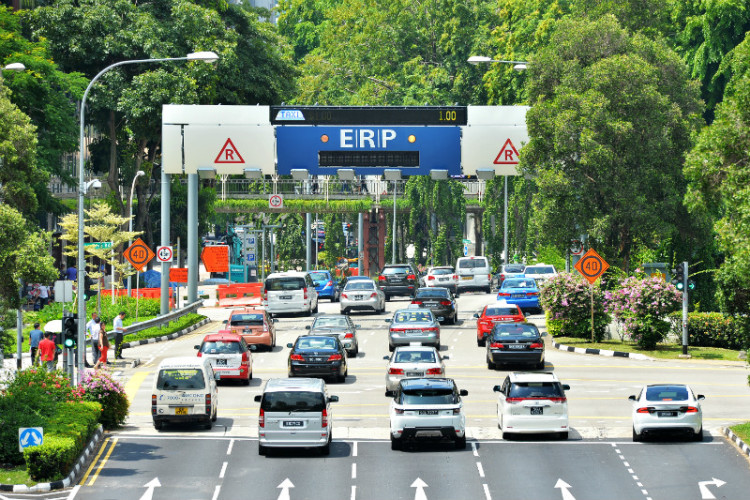 As early as the 1960s, Singapore has recognised the need to regulate road usage. It introduced high vehicular taxes, which cars bore the brunt of (since, it was argued, cars made the most discretionary and non-commercial trips).
As early as the 1960s, Singapore has recognised the need to regulate road usage. It introduced high vehicular taxes, which cars bore the brunt of (since, it was argued, cars made the most discretionary and non-commercial trips).
But it wasn’t car ownership per se that caused congestion. It was usage. Hence, in 1975, the Government launched the Area Licensing Scheme, a paper-permit precursor to Electronic Road Pricing (ERP), which was implemented from 1998.
On Thursday, the Land Transport Authority announced it had awarded a contract to build a next-generation gantry-less ERP system.
What will ERP 2.0 mean to road users, businesses and Singaporeans at large? For starters, it is useful to recognise how different the new system is.
Because it is based on satellite navigation technology, the new ERP system has islandwide coverage. But it does not mean motorists will be charged the moment they leave the house.
It will apply only to congested roads. And as a congestion charging tool, it will be finer than the current system because it can zero in on precise spots where jams are likely to occur. The current static system forms a rough cordon around a congestion-prone area – which can be very wide and crude.
Shop and eatery owners who have complained in the past about ERP affecting their business could find cheer in ERP 2.0, which, if calibrated well, will not sterilise a whole district.
And with all other factors being equal, motorists could end up paying less than today. Instances where motorists find themselves under another gantry after a wrong turn, or having to pass two gantries within a short stretch, may be a thing of the past.
Much depends on whether the LTA flips the distance-charging switch. Distance-charging is the new system’s killer app, as it allows the LTA to charge each road user for the exact amount of road space he consumes. This changes the current ballgame.
Those who are likely to bear the biggest brunt of distance-charging will be those who typically clock high mileage – such as cabbies, deliverymen and bus operators.
But as always, behaviours will change and things will evolve around new policies. It is likely that taxi-drivers will cruise less for fares, and commuters will rely more on electronic hailing via apps.
Logistics companies will alter their operating hours and routes (or even truck-pool) – which is a good thing because commercial vehicles currently take up an inordinately high amount of road capacity.
Bus operators will see their expenses go up, but ERP charges are still likely to be minute compared with manpower, depreciation and fuel expenditure.
How impactful the system will be also depends on how open policymakers are to tweaking components such as COE and road tax. When ERP was introduced, road tax rebates were granted. So the same could be done for ERP 2.0. Motorists can then decide on ways to use the savings other than blowing them on ERP charges.
ERP 2.0 also presents a golden opportunity for Singapore to overhaul its COE system, which has been blamed for perpetuating the sunk-cost syndrome and over-consumption of road capacity.
If the lifespan of the COE is tied to a predetermined mileage – say, 120,000km – instead of 10 years, people will naturally use their cars more judiciously. The ability to track the distance clocked by each vehicle makes this feasible.
Readers have raised concerns about privacy issues. As mentioned before, data collected is anonymised. The degree of anonymity can be calibrated, so that the system knows how many kilometres you clocked but not where you went and when (or with whom).
In any case, anyone who carries a mobile phone today is already “tracked”.
ERP 2.0 has other benefits, like real-time dissemination of traffic info, which will help drivers plan their journeys better, or to decide whether they should even drive.
Other functions include coupon-less street-side parking and automatic charging of off-peak car usage outside the prescribed hours. This means more convenience for drivers, who no longer have to worry about over- or under-tearing parking coupons. Same for off-peak car owners.
The Government in turn can save tens of millions a year on enforcement and prosecution. With that, perhaps it will invest in the next ERP – which is not Electronic Road Pricing, but Electronic Road Protocol. To be rolled out in 2040, it will oversee a sizeable population of autonomous vehicles here by then.












